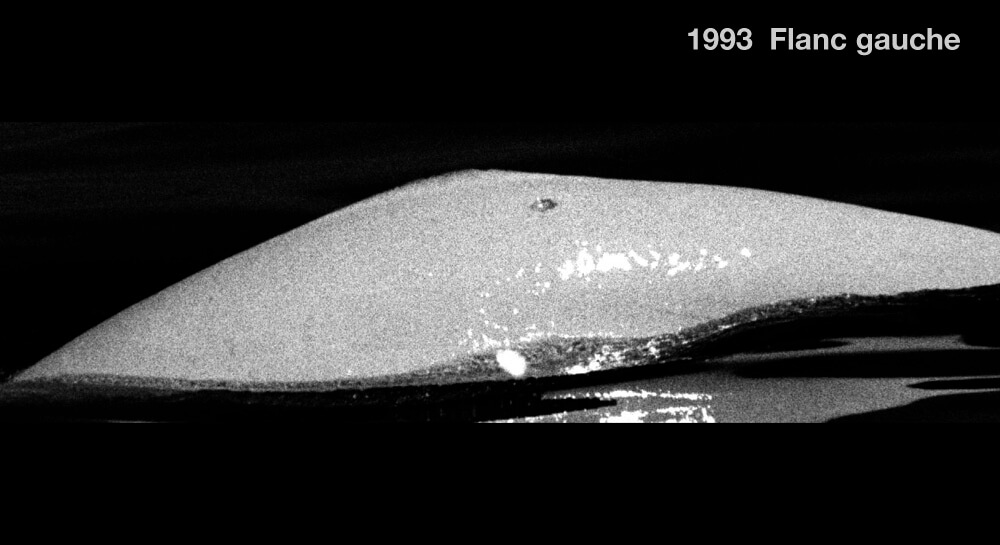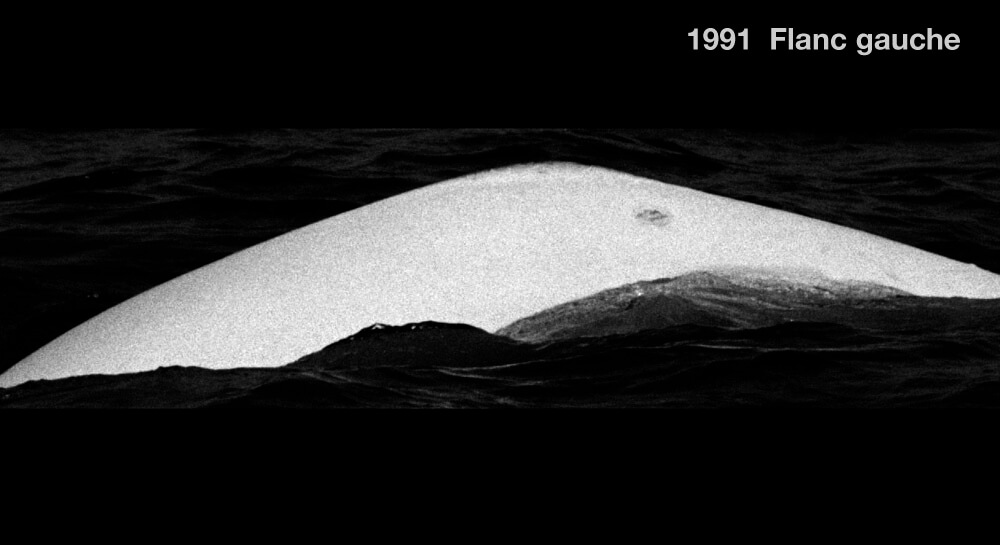Muska
Beluga


Adopted by Québec-Téléphone
-
ID number
DL0068
-
Sex
Presumed female
-
Year of birth
Before 1971
-
Known Since
1987
Distinctive traits
On Muska’s left flank, just below the crest, is a small scar. Combined with the indentations on her dorsal crest, this mark helps to distinguish her. Muska’s right flank is unknown.
Life history
Muska was first photographed in 1987. She was white, so would have been born before 1971.
Her small size and the presence of a youngster alongside Muska allow us to presume that she is a female. However, due to lack of data, we can’t define which community of females she gravitates with.
In summer, females form large communities in which they look after newborns and young. These communities are attached to traditional territories, and there is little exchange between them. St. Lawrence belugas generally give birth between June and September. The calves are nursed for around two years. This period of learning and mothering is vital to the survival of the newborn.
Observations history in the Estuary
Years in which the animal was not observed Years in which the animal was observed
Latest news
Muska swims in the Alouettes flats area. She’s not alone : a few adult belugas, juvenile belugas and a newborn calf make up her herd. Other belugas are spotted on the periphery, but we lose sight of them.
Muska was last seen over twenty years ago. What happened to her? Did she die? Has she remained invisible to the researcher’s eye all this time? Impossible to know at the moment. One thing is certain, her story remains a valuable source of information for our knowledge of this fragile population.
Sponsor
Québec-Téléphone adopted Muska (1989)


